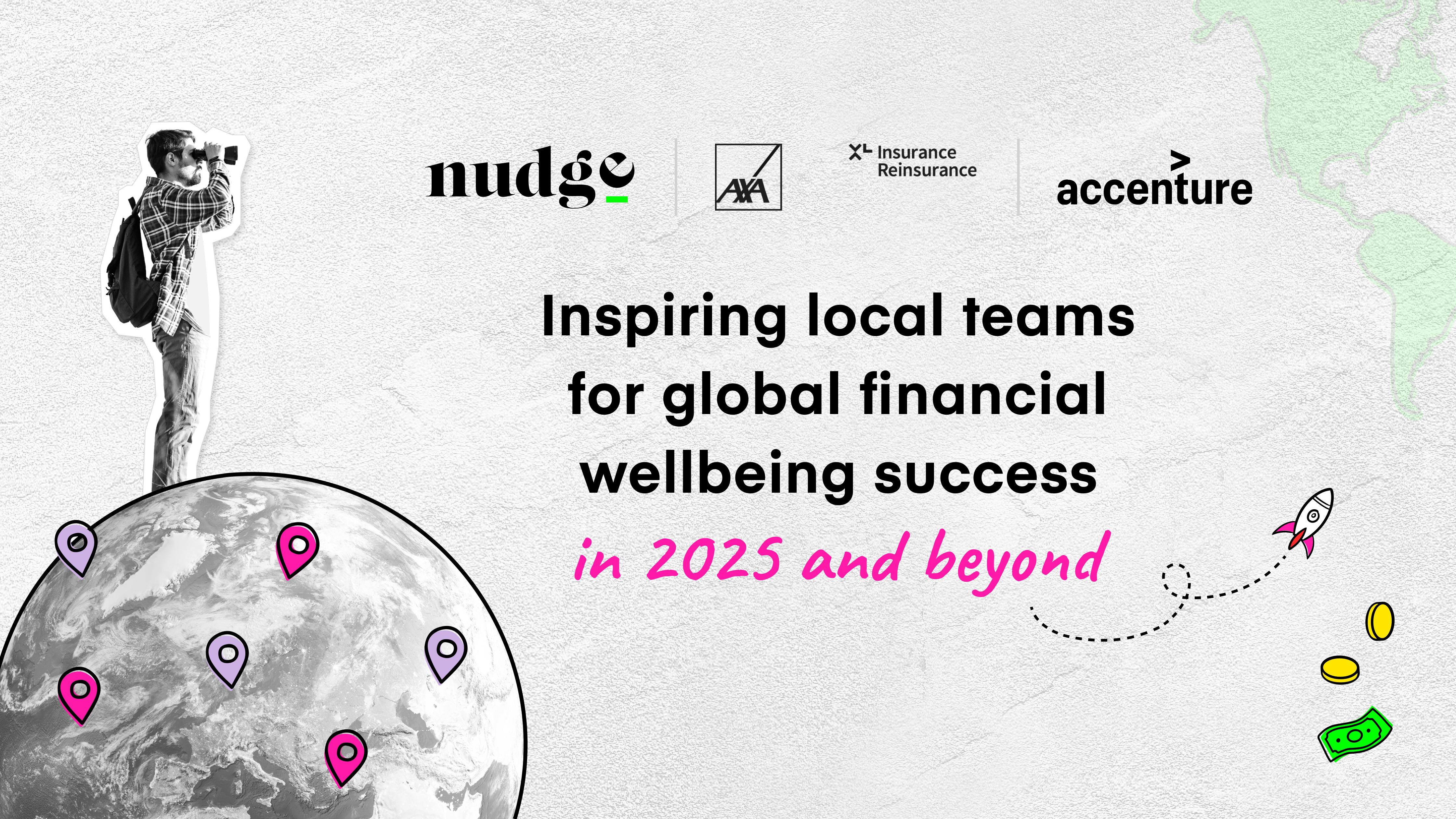Inspiring local teams for global financial wellbeing success
2 min read

We invited global reward leaders to share fresh insights on engaging local teams in a global financial wellbeing program. With input from nudge’s regional financial education experts, we explored how addressing each region’s unique cultural, economic, and social realities can help organizations better support employees while driving higher engagement and stronger financial wellbeing outcomes. Missed the conversation? Read on for key trends, actionable strategies, and practical takeaways to support financial wellbeing across the globe.
Global backdrop to financial wellbeing across APAC, EMEA, and AMER
APAC: Rising debt and financial pressures
High discretionary spending: Economic growth in India, Malaysia, Vietnam, and the Philippines, coupled with potential wage increases in Hong Kong and Japan, is fueling higher spending. While this can boost economies, it may reduce savings and increase household debt.
Mounting debt levels: Household debt remains a major concern, with Malaysia and Thailand exceeding 80% of GDP, and New Zealand’s households owe more than 1.5 times their annual disposable income.
Rising healthcare costs: Aging populations in China, India, and Japan are increasing demand for private healthcare, driving up insurance premiums, and straining public health systems.
EMEA: Housing affordability and economic uncertainty
Housing costs on the rise: Homeownership and rental affordability are worsening, with some households expected to spend over 40% of disposable income on housing. EU housing prices have risen 48% over the past decade.
Retirement challenges: Aging populations, low birth rates, and potential reductions in state retirement provisions highlight the need for increased personal savings.
Energy costs and inflation: While energy prices have stabilized, high costs continue to impact household budgets, especially for lower-income families.
Economic and policy watch points: Fiscal policies, political changes in France and Germany, and Bulgaria’s expected euro adoption could impact financial stability. The European Central Bank’s rate decisions may further affect personal finances.
AMER: Inflation, debt, and digital finance
Inflation trends: Argentina has seen a sharp decline in inflation from 300% to just over 100%, with further reductions targeted. The U.S. and other countries are experiencing more stable inflation rates.
Record-high personal loan balances: In the U.S., personal loan debt has reached $249 billion, reflecting growing reliance on credit to manage financial needs.
Shift to digital finance: Countries like Mexico, traditionally reliant on cash, are seeing rapid adoption of digital banking and payment systems.
Political and economic uncertainty: The U.S. and Canada are undergoing leadership transitions, with potential impacts on taxation, social spending, and trade policies. Brazil's ongoing pension reforms are also being closely monitored.
Top 5 employer considerations to engage local teams for global financial wellbeing success
- Involve senior leaders and train local teams to champion the initiative. This ensures the program is prioritized and relevant to each location, with employee-led networks helping spread awareness and create authentic discussions around financial wellbeing.
- Use data to understand region-specific financial concerns and provide targeted resources. Personalize financial education to local languages, cultures, and market conditions, ensuring it addresses challenges like inflation or debt relevant to each region. Experts from nudge can help localize content to make it actionable.
- Go beyond one-time events by offering continuous learning opportunities. Incorporate financial wellbeing into regular communication, such as monthly health and wellbeing forums, ensuring it's a year-round focus. Leverage employee feedback to refine and create new campaigns.
- Connect financial wellbeing to broader topics like mental health and gender equality. This attracts diverse employee groups, emphasizing the holistic benefits of the initiative.
- Create a culture where employees share financial knowledge with their families and communities, helping make the program feel more personal and impactful.
Want more insights like this? Watch the webinar on-demand now.


